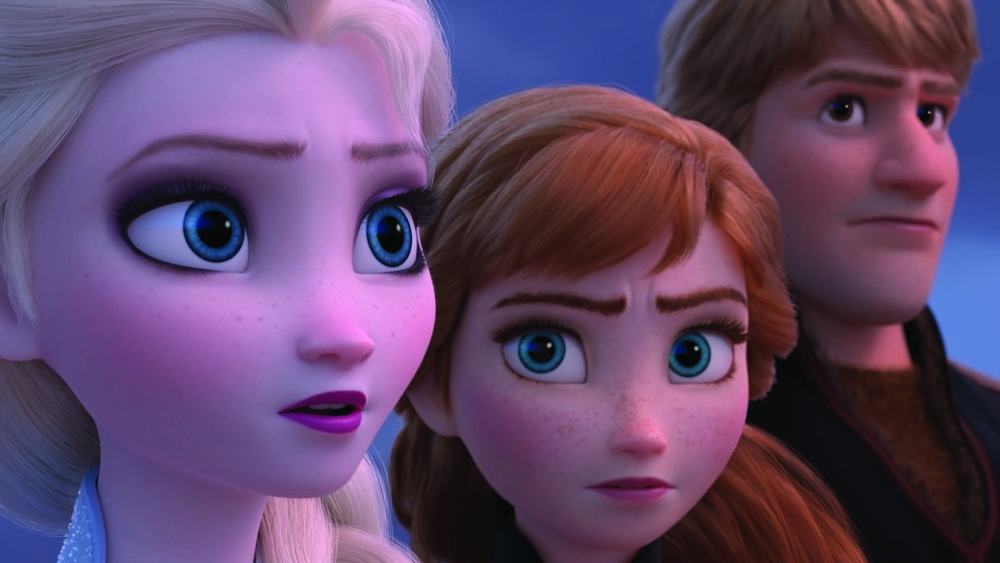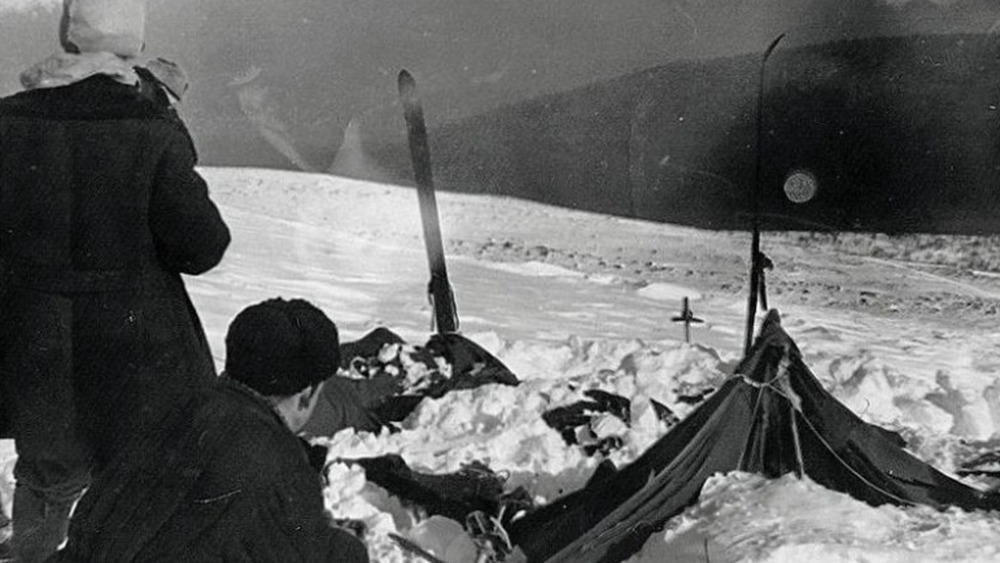The Surprising Way Frozen Solved A Dead Mountain Hiking Mystery
The cold may not bother Elsa in Frozen, but it's a force to be reckoned with if you're thinking about hiking in the Ural Mountains of Western Russia. Known for its extreme temperatures and a particularly dangerous peak, known locally as "Dead Mountain," the area became infamous for the tragic deaths of nine hikers in January of 1959, according to Live Science. The circumstances of the incident were darker than any Disney plot: bodies of the eight students and their instructor were found scattered around the forested Dyatlov Pass (so named for one of the deceased hikers), 26 days after an event that no one was able to explain.
An article in the Communications Earth & Environment research journal explains that, although the Soviet government conducted a criminal investigation, and concluded that a "compelling natural force" had killed the group, the hikers had sustained traumatic injuries inconsistent with those of avalanche victims. Add to that reports of strange lights in the sky that night, radioactive material found on the hikers' clothes, and no obvious signs of an avalanche, and Russia had a good old fashioned unsolved mystery on its hands. What is really surprising, however, is how Disney's Frozen played a role in solving this 62-year-old puzzle.
The animators behind Frozen provide helpful technology
The cause of the hikers' deaths in the Dyatlov Pass incident was determined to be hypothermia, and the case went cold (pun not intended). But Johan Gaume, head of the Snow and Avalanche Simulation Laboratory at the Swiss Federal Institute of Technology, just couldn't let it go (still not intended). According to National Geographic, Gaume was watching Frozen, no doubt being charmed by Anna and her hilarious sidekicks as they endeavored to find Queen Elsa, when something else struck him: these Disney guys really know their snow. Gaume was so impressed by the depiction of snow movement in the film that he reached out to the animators directly, and booked himself a ticket to Hollywood to find out more.
After spending time with the specialist in charge of Frozen's snow effects, Gaume returned to Switzerland with a unique souvenir: Disney's snow animation code. Teaming up with another SFIT scientist, geotechnical engineer Alexander Puzrin, Gaume used this technology to simulate the impact that an avalanches could have on a human body, in conjunction with automotive research conducted in the 1970s on human cadavers. When the pair published their findings in January, they posited that, indeed, a slab avalanche was the most probable cause of death for the Dyatlov Pass hikers. "People don't want it to be an avalanche," Gaume told National Geographic. "It's too normal." And while their study doesn't account for all the strange elements of the Dyatlov Pass incident, the working theory involves several able-bodied hikers attempting to rescue their injured teammates. "This is a story of courage and friendship," Puzrin explains.

